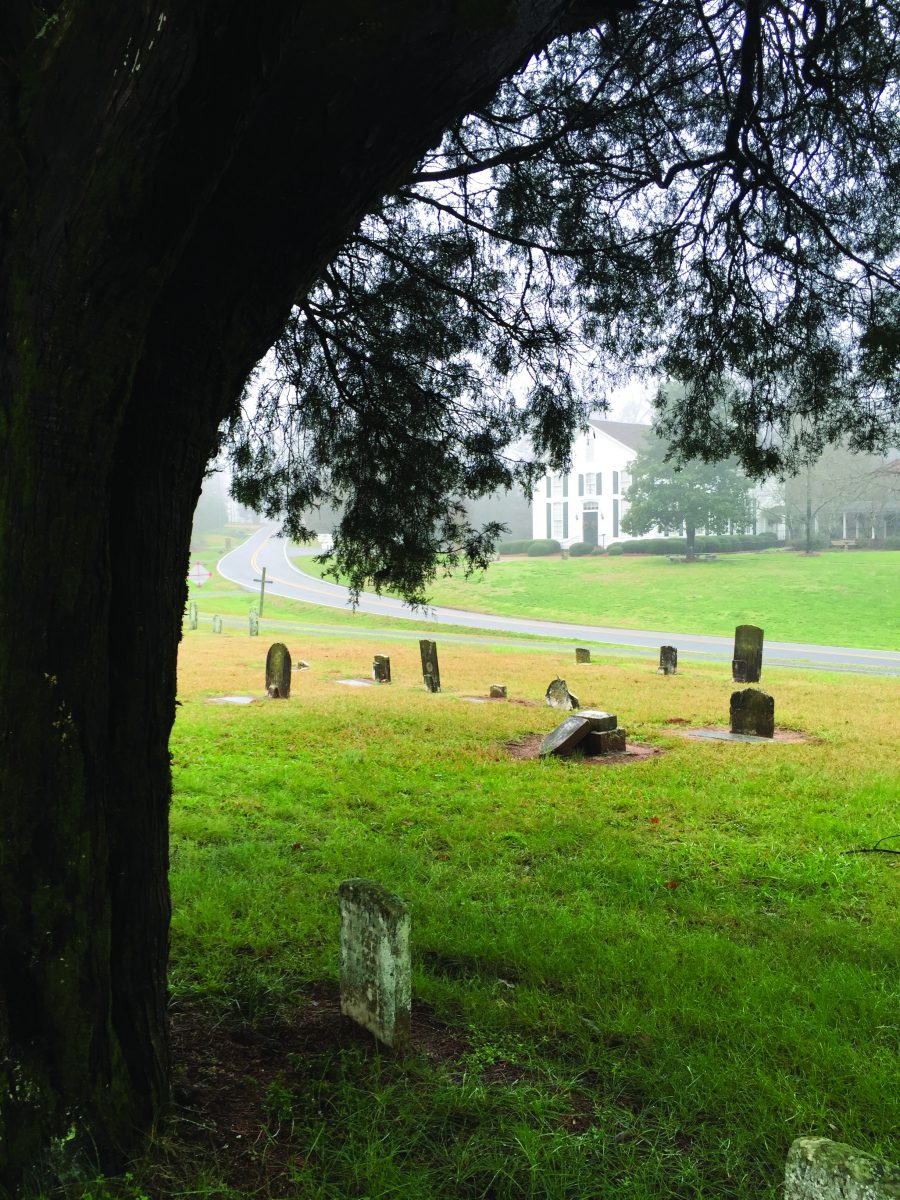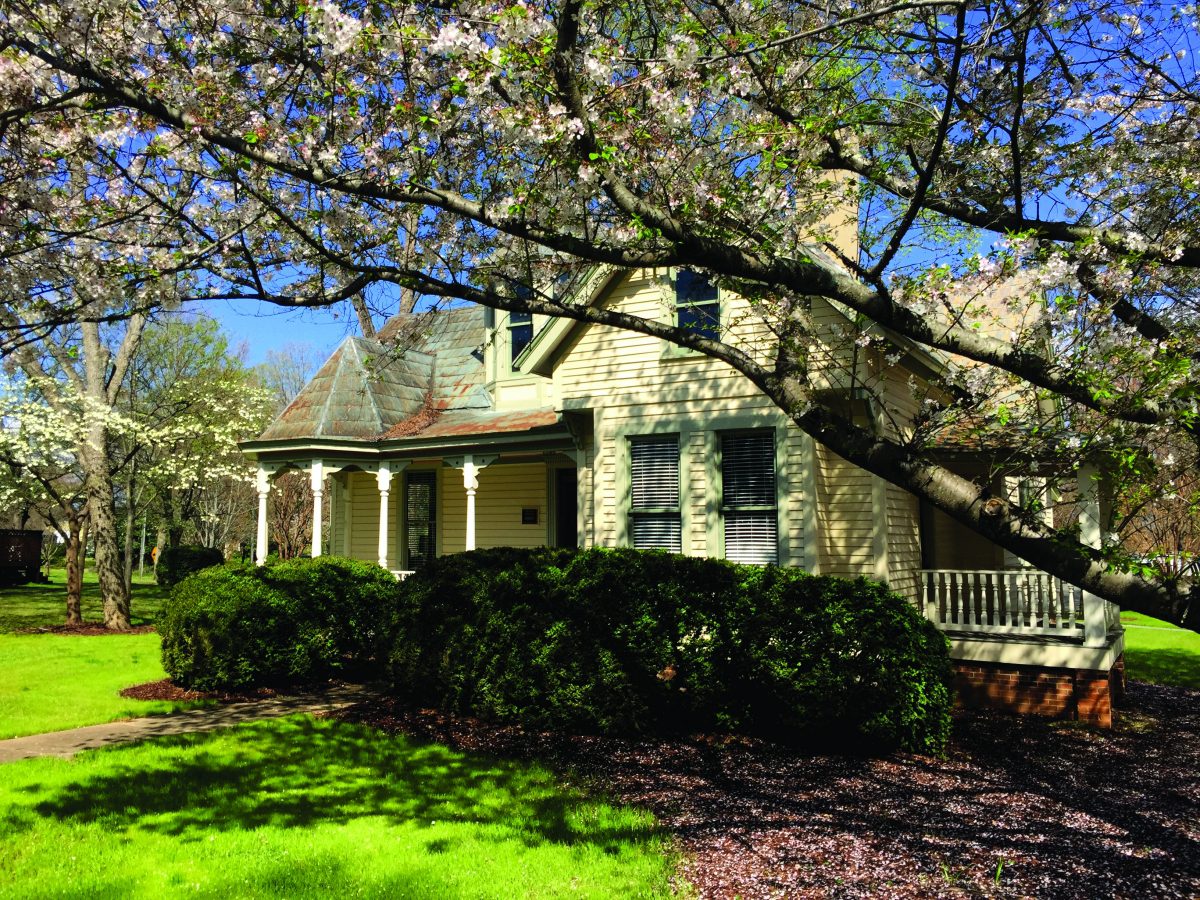Why do old places matter? A Mecklenburg native explores the question.

 Reading the essays in Tom Mayes’ book, Why Old Places Matter: How Historic Places Affect Our Identity and Well-Being, one comes away with the sense that he’s not only seeking to understand the innate pull of old places that compels us to protect our historic fabric, but also appealing to a new generation of preservationists who may not yet even consider their work a part of the movement.
Reading the essays in Tom Mayes’ book, Why Old Places Matter: How Historic Places Affect Our Identity and Well-Being, one comes away with the sense that he’s not only seeking to understand the innate pull of old places that compels us to protect our historic fabric, but also appealing to a new generation of preservationists who may not yet even consider their work a part of the movement.
Mayes, a Huntersville native, is chief legal officer and general counsel of the National Trust for Historic Preservation in Washington, D.C. He first published these essays as blog posts on the Trust’s online Preservation Forum. They were the result of a period of research and reflection he began in 2013, when he was awarded the prestigious Rome Prize in Historic Preservation from the American Academy in Rome.
Surrounded for six months by the grandeur of the Eternal City, and the many layers of history revealed in its streets and plazas, Mayes began to explore a fundamental question that he had pondered for much of his life, dating back to his childhood on his family’s farm in the historic Ramah Church community of North Mecklenburg – why exactly do old places matter?
It’s a pressing question in Charlotte, a “New South” city proud of its gleaming skyline, but a community that’s gotten a reputation for tearing down its history to make way for the next big thing.
Mayes’ research led him to immerse himself in both ancient philosophical texts and modern psychological studies. He spoke with world-famous artists and architects, as well as unheralded stewards of neighborhood landmarks, and he embraced the power of the Internet to solicit the diverse experiences of average people well outside the rarefied halls of the American Academy. What resulted is a series of 14 interrelated essays that attempt to answer his organizing question about the value of old places.
|
Familiar and expected themes, such as “history,” “ancestors,” “architecture” and “beauty” are found, but often examined in new and refreshing ways. Mayes takes an honest look at the origins of America’s historic preservation movement, and acknowledges its occasional tendency to “tell only a selective view of American history.” He also makes a compelling case that the impulse to preserve old places is universal, and advocates for a more inclusive preservation movement, as well as a more honest interpretation of the places that are protected.
Although clearly speaking to traditional preservationists in these passages, it’s in the essays on “continuity,” “individual identity,” “sustainability” and “community” where Mayes appears to be in dialogue with a new generation of activists who may never have thought of themselves as preservationists. The language and references of his essays will be familiar to many new urbanists, advocates for sustainable development, and champions of neighborhood character and cultural identity.
From the beginning, in his prologue, Mayes notes: “Almost all the attention is on new places – on placemaking rather than on place sustaining.” But, in the essay on “Community,” he is careful to say about the placemaking of new urbanists,
“I applaud these efforts. Yet something critically important is often overlooked, and that is the idea that the development of real community takes time. Community develops through the interaction between people and place over time. We cannot build a community – we can only foster the conditions in which communities can grow and thrive. Community occurs in the organic interaction between people and place.”
In other words, while Mayes is appreciative of those who look to “foster the conditions in which communities can grow and thrive,” and seems to be acknowledging that good design can lead to the sorts of places that people will eventually forge connections with and be willing to fight to save in the future, he reminds us that only time can create a true sense of community. He also reminds us that we shouldn’t be too eager to discard those places where people, place and time have already converged to work their magic.

Ramah Presbyterian Church credit Tom Mayes/National Trust for Historic Preservation
Mayes makes similar points about sustainability (“old places should themselves be viewed as part of the ecology we hope to sustain”), and the importance of old places in fostering a creative environment that supports economic vitality. In his essays on “memory” and “identity,” an observer of Charlotte’s history can’t help but hear echoes of the loss of the Brooklyn neighborhood to urban renewal in the 1960s. That loss is still felt not only by those who once lived there, but also by those who weren’t even born yet but want to avoid the mistakes of the past, even as they embrace and celebrate the rebirth of Charlotte’s urban core.
Readers will recognize many Mecklenburg sites alongside famous places such as Rome’s Piazza Navona and Washington’s Dupont Circle. These include Ramah Presbyterian Church in Huntersville, the Town of Davidson’s Sloan House, and, what will surely surprise many readers, Charlotte’s now-demolished Eastland Mall.
Even without these familiar local places, Mayes’ essays would feel relevant to anyone who has followed or been active in Mecklenburg’s ongoing debates about growth and what should be preserved. This includes recent efforts to save iconic places like the Excelsior Club on Beatties Ford Road and the Van Landingham Estate in Plaza Midwood, as well as ongoing concerns about gentrification in historic neighborhoods such as Belmont in Charlotte and Smithville in Cornelius.
In his introduction, Mayes pays homage to the 1966 book With Heritage So Rich, which not only sparked efforts to establish the National Historic Preservation Act, but also inspired several generations of historic preservationists. By quietly and eloquently placing historic preservation back in the public dialogue about placemaking, identity and sustainability – conversations that are transforming our understanding of well-being in the 21st century – Mayes has done his part in ensuring the ongoing relevancy of historic preservation in public life.

Sloan House, Davidson. Credit Tom Mayes/National Trust for Historic Preservation